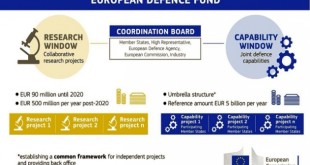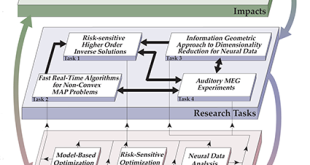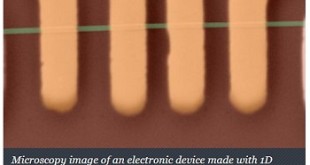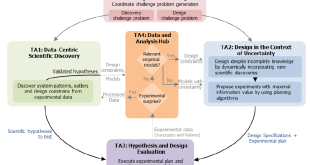The Electromagnetic Aircraft Launch System (EMALS) is a type of aircraft launching system currently under development by General Atomics for the United States Navy. EMALS uses electrical energy to propel Aircraft by converting electric energy into kinetic energy. The system launches carrier-based aircraft by means of a catapult employing a …
Read More »Monthly Archives: October 2018
U.S., Britain blame Russia for global cyber attack targeting Network Infrastructure Devices
The United States and Britain in 2018 accused Russia of launching cyber attacks on computer routers, firewalls and other networking equipment used by government agencies, businesses and critical infrastructure operators around the globe. Network infrastructure consists of interconnected devices designed to transport communications needed for data, applications, services, and multi-media. Routers …
Read More »Pan EU Defence Fund aims to enhance interoperability, industry cooperation, strategic autonomy, and foster innovation
European Defence Fund, which was established in 2017 with the aim to coordinate and increase national investment in defence research and to improve interoperability between national forces. European Union policymakers have backed plans that will see the organization financially support the European defense industry in an effort to promote new …
Read More »DARPA’s Lagrange developing optimization algorithms for uncertain, dynamic, multiscale settings like Real time neuroimaging data
Mathematical optimization is a branch of applied mathematics that in the broadest senselooks for best solution with regard to some criterion from some set of available alternatives. The advent of the digital computer and a tremendous subsequent increase in our computational prowess has increased the impact of optimization in our …
Read More »Spintronic Magnetic Sensors have unique adavantages in current sensing, vehicle detection, bio detection for IoT and radar detectors for military
In quantum mechanics, spin is an intrinsic form of angular momentum carried by elementary particles. Spintronics is “A branch of physics concerned with the storage and transfer of information by means of electron spins in addition to electron charge as in conventional electronics.” Spin-based electronics focuses on devices whose functionality …
Read More »New Technologies enabling Solar Powered Stratospheric drones for Global Internet, 5G wireless and Military Surveillance
Aerospace companies including Facebook, Boeing and Google have been trying for years to create a solar-powered plane that can fly at high altitudes for years at a time, and can provide broadband communication services. They could have many uses, for example acting as a relay station for communications in emergencies such …
Read More »One-Dimensional Nanomaterials for next generation electronics , optical communications and multi spectral detectors and cameras
Nanomaterials are often categorized based on number of dimensions of a material, which are outside the nanoscale (<100 nm) range. Accordingly, in one-dimensional nanomaterials (1D), one dimension is outside the nanoscale. This class includes nanofibers, nanotubes, nanorods, and nanowires. 1D materials are generally considered to be high‐capacity and stable electrode materials, due …
Read More »Researchers developing Vanishing or self destructing electronics to avoid being leaked or reverse engineered
In April 2001, a US Navy surveillance plane was intercepted by two Chinese F-8 fighter planes during a routine patrol flight over the Chinese South Sea. The US plane was forced to make an emergency landing in China, after what officials described as a “minor” midair collision, occurred with one of the Chinese planes. The US …
Read More »DARPA’s SD2 developing tools to design complex systems like synthetic biology, neuro-computation and polymer chemistry
Engineers regularly use high-fidelity simulations to create robust designs in complex domains such as aeronautics, automobiles, and integrated circuits. In contrast, robust design remains elusive in domains such as synthetic biology, neuro-computation, and polymer chemistry due to the lack of high-fidelity models. DARPA’s Synergistic Discovery and Design (SD2) program aims …
Read More »DARPA’s Transparent Computing programme for defeating complex, sophisticated and stealthy long-term Advanced Persistent Threats ( APTs)
Modern computing systems are essentially black boxes that accept inputs and generate outputs, but provide little-to-no visibility of their inner workings, according to DARPA. It can therefore be extremely challenging to detect an intruder, particularly an ‘Advanced Persistent Threat’: a form of attack in which the adversary slowly and deliberately …
Read More » International Defense Security & Technology Your trusted Source for News, Research and Analysis
International Defense Security & Technology Your trusted Source for News, Research and Analysis









